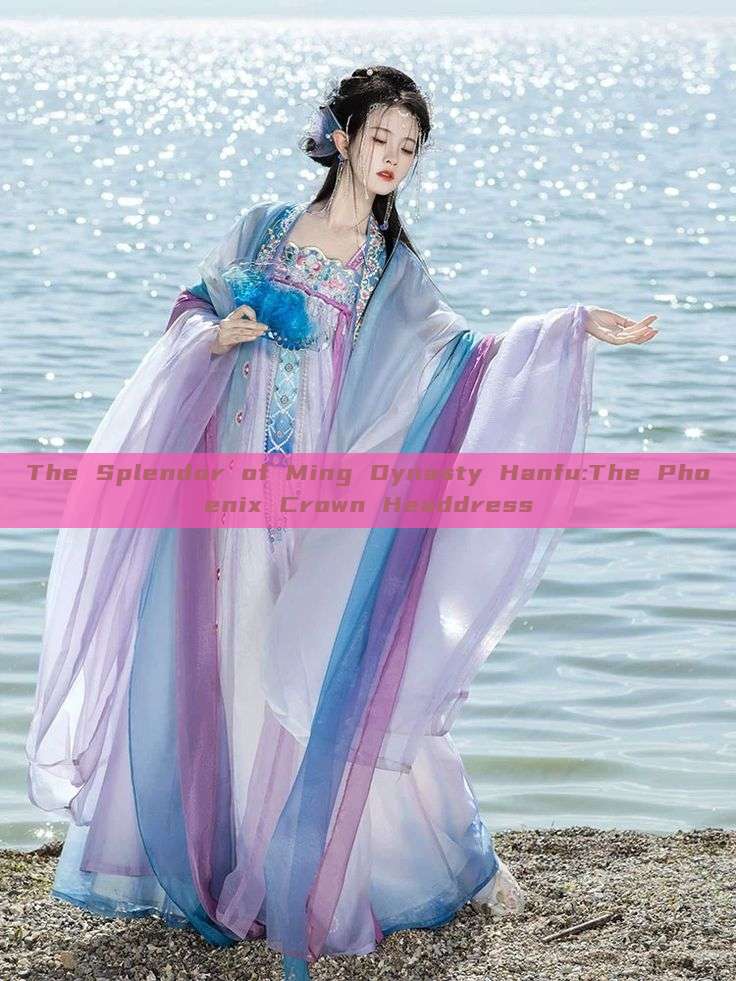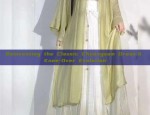The Splendor of Ming Dynasty Hanfu:The Phoenix Crown Headdress
In The annals of Chinese history, the Ming Dynasty (1368-1644 AD) stands out as a period of remarkable cultural and artistic achievement. Among the various forms of traditional attire, Hanfu, specifically the phoenix crown headdress, was a symbol of nobility and exquisite craftsmanship. This article delves into the history, design, and cultural significance of the Ming Dynasty Hanfu phoenix crown.

The Ming Dynasty saw a renaissance in cultural expressions, including the revival of traditional clothing. Hanfu, a traditional Chinese clothing style, experienced a renaissance alongside the dynasty's political and economic prosperity. The phoenix crown headdress was a prominent piece of jewelry worn by women in high society during this period.
The design of the phoenix crown was intricate and complex, reflecting the skilled craftsmanship of the Ming Dynasty. It was often made of precious metals like gold or silver, and adorned with intricate carvings and inlaid gemstones. The crown was shaped like a phoenix, symbolizing nobility and dignity. The design also incorporated other elements like flowers, birds, and clouds, creating a harmonious blend of nature and art.
The phoenix crown headdress not only served as a decorative accessory but also had a deep cultural significance. It was a symbol of power and status, worn only by women in high society or of noble birth. The intricate design and use of precious materials reflected the wearer's social standing and wealth. It was also a symbol of good luck and prosperity, signifying the wearer's status in society and her role in maintaining family honor.
The manufacturing process of the phoenix crown involved skilled craftsmanship and was a time-consuming endeavor. The raw materials were sourced from various parts of China, and skilled artisans used traditional techniques to craft the headdress. The use of precious metals and gemstones added to the cost and made it even more exclusive to the elite class.
The phoenix crown headdress also played an important role in cultural festivals and ceremonies. During weddings, festivals, or other ceremonial occasions, women wore their best Hanfu attire along with the phoenix crown headdress. It was considered auspicious to wear this headdress during such occasions, signifying good luck and prosperity for the wearer and her family.
The influence of the phoenix crown headdress extends beyond the Ming Dynasty. Its design and cultural significance have influenced modern-day Chinese fashion and jewelry designs. Many modern designers have incorporated elements of traditional Chinese culture into their designs, often drawing inspiration from the exquisite craftsmanship and symbolism of the phoenix crown headdress.
In conclusion, the Ming Dynasty Hanfu phoenix crown headdress is not just a piece of jewelry; it is a symbol of cultural heritage and skilled craftsmanship. It reflects the political, social, and cultural landscape of the Ming Dynasty and continues to influence modern fashion and design. As we look back at our cultural history, the phoenix crown headdress stands as a testament to the rich cultural heritage of China.
This article aims to provide a comprehensive understanding of the Ming Dynasty Hanfu phoenix crown headdress, its history, design, cultural significance, and influence on modern fashion. Through this exploration, we can appreciate the beauty and craftsmanship of traditional Chinese culture and its relevance in modern times.

 Previous Post
Previous Post





